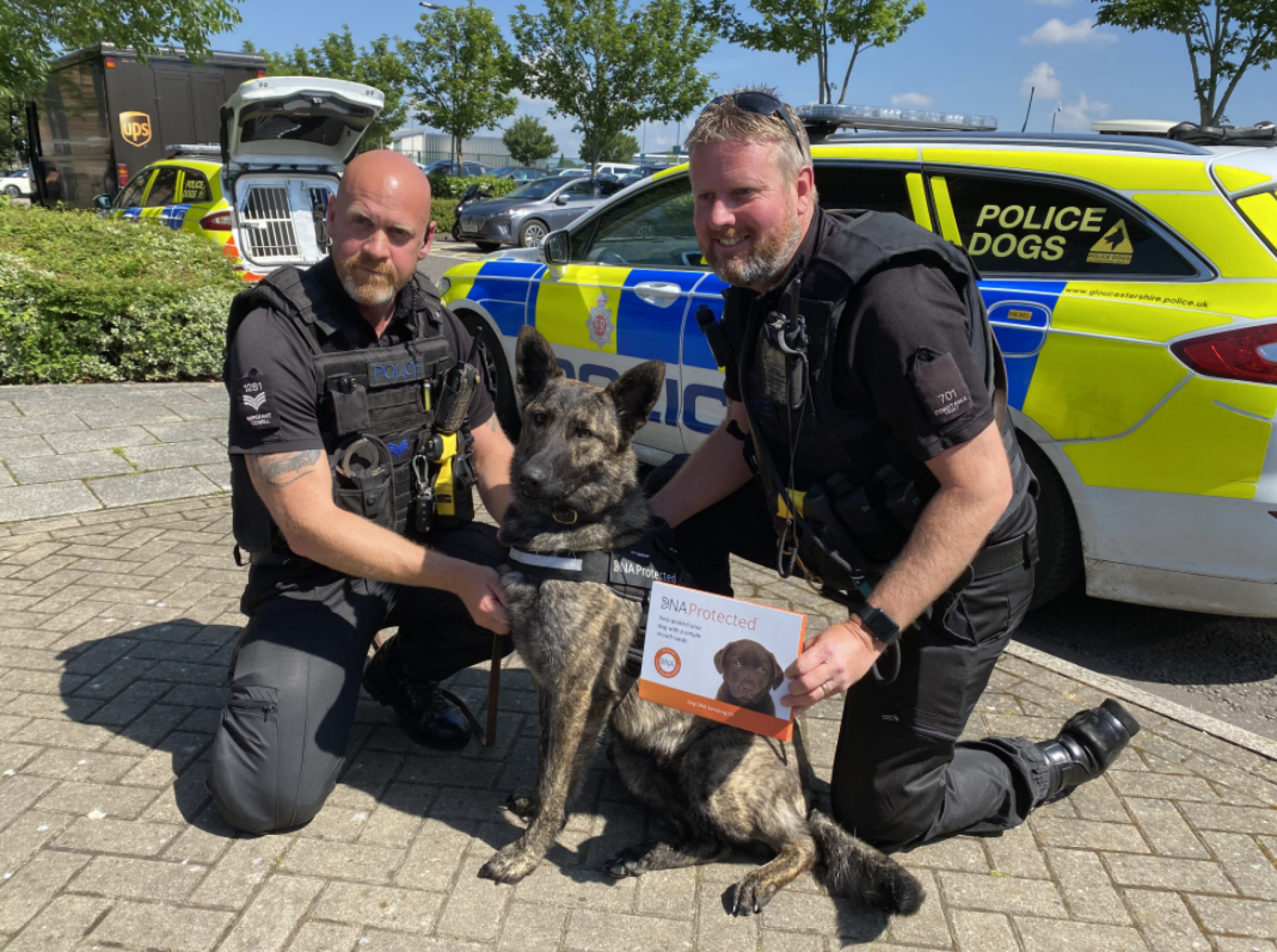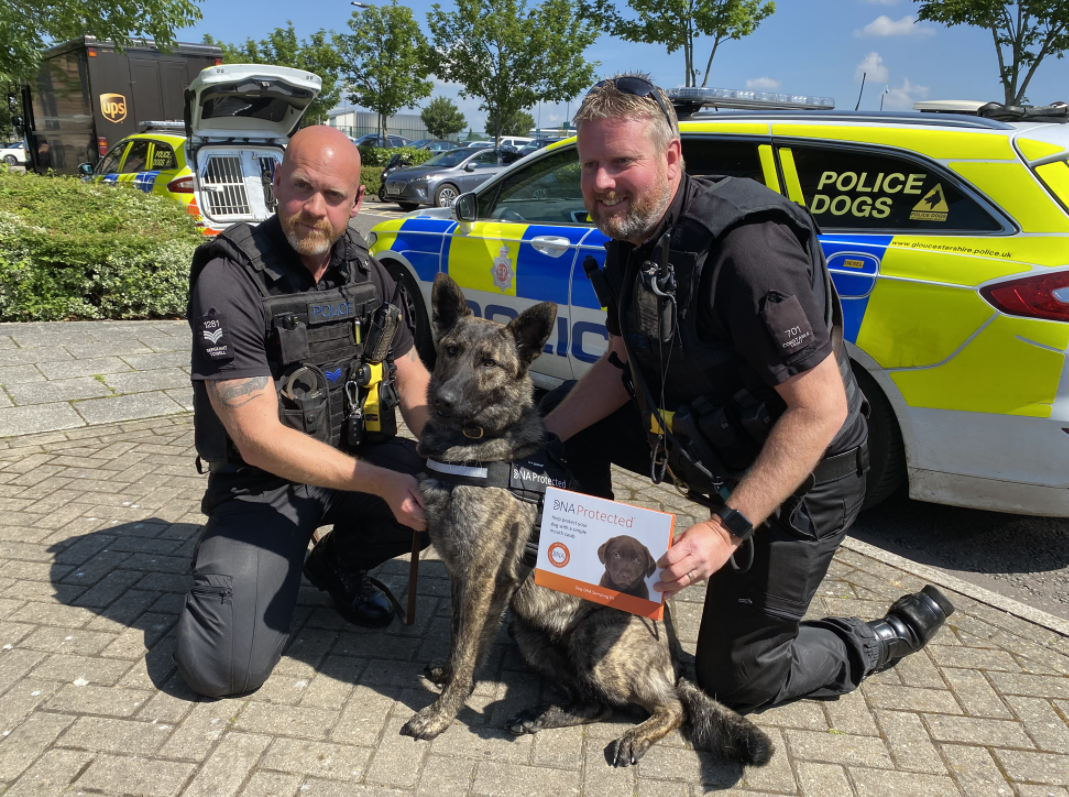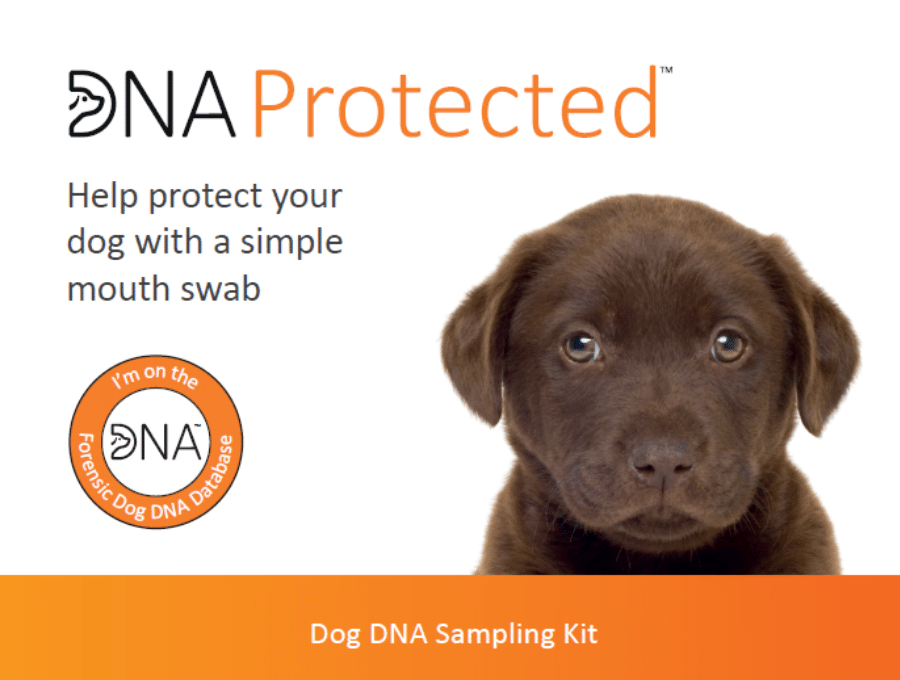
With the price of puppies more than doubling last year, organised criminal groups have targeted dog thefts as a low-risk, high-reward venture. In this Force Focus, Gloucestershire Constabulary tells us about the world-first forensic dog DNA database and how it could help take on OCGs.
They’re part of the family, man’s best friend. But as a ‘lockdown effect’ has seen huge growth in dog ownership and prices of puppies have more than doubled to an average of £1,900 (BBC), they’ve also become a target for criminal activity. Dog thefts, smuggling and ‘dog farming’ are all on the rise – making them the subject for many PCCs’ crime plans. But what is the scale of the problem, and how can policing tackle it?

A dogged problem
There is conflicting evidence on exactly how prevalent the problem is. Some reports suggest dog-related crime is one of Europe's largest growing markets, third after guns and weapons (Organized Crime and Corruption Reporting Project).
But official police figures gathered by research from 33 forces suggests a rise in dog thefts of only 3.5%, a number which authors acknowledge “is largely unreliable”. That research was conducted by a national pet theft taskforce comprising ministers and officials from various government departments. Even so, the widespread coverage of dog thefts across the media and social media have made it a legitimate public concern.
Temporary Chief Inspector Emma MacDonald, the liaison between Gloucestershire OPCC and Constabulary for dog theft, says:
“We’ve been linked with RSPCA, animal shelters and other stakeholders who told us they were receiving lots of enquiries. There was a lot of noise that led us to believe this is a much bigger issue than the police are aware of. We’re told people are scared and don't report it.”
Either way, policing is already mobilising its own approaches to prevent these crimes and alleviate public concern.
“Unfortunately, because of their price-tag dogs are being seen as property and as a commodity. We want to reverse it so dogs become high-risk, low-reward for criminals. Our total focus is what we can do as a force – that starts with preventing thefts in the first place and providing the community with reassurance, and it also extends to recovering stolen dogs and reuniting them with owners,” Emma says.
Gloucestershire’s pet project
In Gloucestershire, crime prevention advisers have been visiting concerned pet-owners and helping them deter criminals. For example, using CCTV, keeping gates, doors and windows locked, and taking any other measure to make theft more difficult.
But if a dog theft does occur, and even if that dog is found or seized by policing, proving identity and ownership is far from simple. There are well-established microchip databases and laws requiring pets to be chipped, but these don’t solve the problem. Chris Allen, Head of Forensic Services at Gloucestershire Constabulary, says:
“There are around 16 different types of chip, and they’re there really to link inoculations rather than to establish identity or ownership. A seasoned criminal will simply remove or wipe the chip, it can be circumvented easily. But for a true investigative chain we need a way to 100% say this dog belongs to that person.”
It was here in the Constabulary’s crime prevention team that the force began exploring a more rigorous and reliable way of reuniting stolen dogs with owners. Chris Allen explains:
“One of the force’s crime prevention officers had an idea that dog DNA would work, but he had no forensic experience. He had been knocking on lots of doors – he’d been to vets, insurance companies, etc – but eventually it found its way to me. I was able to overlap his experience with my knowledge of how to use DNA in an evidential and investigative way, and my forensic experience of custody environments, crime stains and so on.
“We put a call-out to forensic providers to see if any were interested in helping. One was, and it took off from there. Within about three months, we had a team mobilised, a forensic process validated, and the database was launched."

Dog DNA database
That specialist forensic company was Cellmark Forensic Services. The company employs around 500 forensic specialists, largely from its Abingdon laboratory, and the majority of its forensic business involves human DNA profiling.
Cellmark’s Managing Director, David Hartshorne, says:
“The technology itself isn't new. In fact, we’ve been doing dog DNA profiling in forensic cases for some time. But we had a number of discussions around the increase in dog theft and the fact that a database could both help the police to return dogs to their rightful owners as well as be a powerful crime prevention tool.
“Our main advances have been setting up the database, increasing the dog DNA profiling capacity in our laboratories and also making the DNA Protected package available to members of the public.”
Gloucestershire’s Chris Allen adds:
“We worked with Cellmark to establish exactly what we were trying to achieve forensically and how we could roll it out practically. The key part of the solution was that the proprietary kit included a stabilisation card, meaning the sample doesn't have to be refrigerated or frozen. The average member of the public can deal with their own samples.
“They also undertook a very reasonable validation process to confirm they could differentiate individuals from a wide range of dog breeds including closely related litter mates. Dog genealogies can be rather messy at times.”
The result is DNA Protected which launched in June. The process is simple. Members of the public can buy a kit for £75, take a DNA profile of their dog at home and send it to Cellmark. If the unthinkable does happen, found dogs can be compared against the database. They also get a package of eye-catching accessories to show the world their pet is ‘DNA Protected’.
For policing, the database opens up many more opportunities. When animals are recovered, investigators can have them profiled and searched on Cellmark’s database. But it can also aid investigations where the pet is missing and unregistered. For example, DNA can be recovered from the dog’s toy, bowl, bed area and so on, and a profile could then be added to the database from those items. It’s the process already employed for human DNA found at crime scenes. The cost for police forces to identify a recovered dog is £5 per mouth swab kit, then just £25 to profile and search the database.
They admit the database is in early days and has hundreds rather than thousands of profiles at moment. “It’s early days,” T/Chief Inspector Emma MacDonald says, “but there has been lots of interest from police forces and stakeholders keen come on the journey. We’re going out to other police forces very proactively, and we see this working really as a national capability.”
David from Cellmark adds:
“We have a great working relationship with Gloucestershire’s crime prevention and forensic services teams. We’re all dog lovers and interested in the same things: preventing and investigating crime. We support most forces in the country and know that forensics has to work hand-in-hand with investigators.”
Tracking down organised crime
Bringing this profiling process into investigations has also opened opportunities for Gloucestershire to root out organised crime. Head of Forensic Services, Chris says:
“We have a bigger focus on wider criminality. Of course, we are very happy to reunite dogs with owners, but there’s the wider aspect of organised crime. This is another angle to tackle it.
“The concern is that dog theft isn't being reported because OCGs use it alongside techniques like threats, extortion and blackmail. Organised crime is involved in this up to the eyebrows, and as a dog-owner you’re faced with these people knowing your home address, about your family and so on.
“A stolen dog can lead us to an illegal dog trader, and that individual can lead us to organised crime. We’re looking for any forensic ‘in’ to identify and capture criminals. Remember that Al Capone was finally brought to justice on tax evasion, we could convict career criminals on dog trading.”
That preventative message will take time to get through, but DNA Protected and what it enables for investigations is an important catalyst. “We need dog theft to be too hot to handle,” Chris says. “What we had previously was basic, but now we have a major player providing a really good system with resource behind it.”
Even with improved investigations, there is a long way to go achieving justice. Emma says:
“Dogs are a much-loved part of a family, and if you asked any dog-owner they would treat dog theft as a crime in action, almost the same as the kidnap of a person. But the law doesn’t see it in same way in terms of sanctions. We don't think anybody has gone to jail for this crime. So not only is it underreported, but when it is reported the judgment doesn't fit the crime.”
The last word
The final theme we discussed in this wide-ranging topic was innovation. How does the force come up with a world-first idea like this, one which costs hardly anything and could have huge national benefits for the public? What factors are needed?
“Combining everyone’s expertise has been key,” Emma says. “We don't have all the answers as individuals, but we were in the right place and right time and able to think creatively, outside of our normal ways of working. This has only been achieved by working together.
“Yes, we’re suffering lack of resources like everyone, but this idea cost only a bit of time and brain power. We just involved people with the right knowledge and ability.”
Chris concludes:
“Gloucestershire is quite small and we are a close knit group, so disparate teams have regular contact and we get to hear ideas. We have a history of developing innovative ideas. Our Chief is also very keen on innovation, we’re very lucky.”
Find out more
To register a dog, visit www.dnaprotected.co.uk.
If you’re from a police force and want to get involved with the national dog working group, contact us and we’ll put you in touch with the Gloucestershire or Cellmark teams.
About this article
Force Focus is our series of in-depth articles sharing insights and ideas from people across the network. To share a story from your organisation, please get in touch.